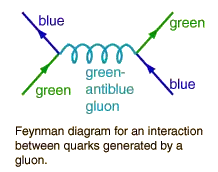In annihilation it is the quantum numbers that add up to zero, baryon number is zero, as strangeness etc. After annihilation, the quarks have to be produced in quark antiquark pairs, which then will combine appropriateley to make hadrons. These can be produced as long as the quantum numbers will be adding up to zero.( for example, if a strange quark is produced an antistrange must accompany it).
It is the energy limitations that will give a limit to the number of hadrons that can be possibly produced.The limits given in the quote in number of possible mesons must come from considering annihilation at rest , or low energies. All the links in the wiki quote state "low energy".
Edit after comment:
The composite particles, protons and antiprotons, proceed in annihilation by the strong interactions that are allowed , and the situation is not simple. Here is a diagram of quark interactions :

This diagram can also be read time going from left to right, where it depicts the annihilation of a quark antiquark pair to a gluon and the gluon generates a different quark antiquark pair, because only color has to be conserved in the peculiar way of the laws of strong interactions. The other quantum numbers, strangeness, bottomness, topnes, charmness, upness and downness disappear in the interaction. This is in contrast to reading the feynman diagram time from bottom to top.
You might think that the number of pairs is conserved, BUT you are counting without taking into account the nature of strong interactions. Gluons, in contrast to photons, self interact. The intermediary gluon is carrying a lot of energy in proton antiproton annihilations,( about two thousand Mev, to the order of up,down quark masses which are of order of mev) and there is a very large probability that it will radiate away to many gluons which gluons will finally manifest into new quark antiquark pairs. The pair numbers are limited by the available energy and the probabilities of the quantum mechanical calculations.
